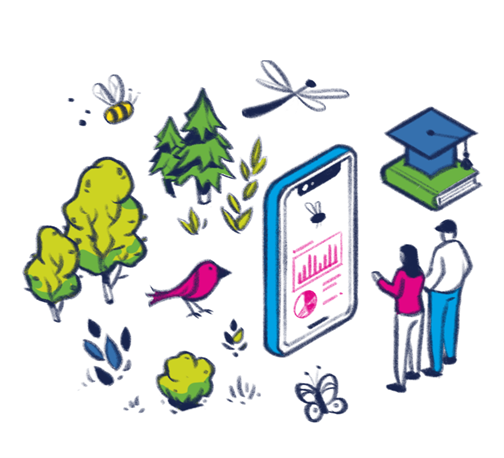
Biodiversity loss in urban areas
Smart City Domain
- Environment
Open for participation as of
- 2025
Description
Declining biodiversity and insect extinction are among the key ecological challenges of our time. Around 40% of all insect species are threatened [1], and the biomass of insects has decreased by 76% in the last 27 years [2]. This decline is a gradual process that affects all green spaces and jeopardises a city’s biodiversity.
A high manual effort and the associated lack of transparency of the insect population make it increasingly difficult to derive measures to protect biodiversity. However, in an urban area such as Berlin TXL, where sealed surfaces and landscape areas meet, it is all the more important to protect and promote nature in its diversity.
To counteract this development, innovative approaches such as site-specific underplanting of street trees and the grouping and mixing of street trees of different species with suitable root space are being developed. This should not only increase the vitality and resilience of the trees, but also benefit insect diversity. To monitor the effectiveness of this approach, an AI-based insect recognition system could be developed, for instance. The application of AI-based detection technology is an advanced tool for monitoring insect populations. It makes it possible to collect precise data that is essential for the development of effective conservation measures to preserve biodiversity without having to capture and kill the insects. Preserving and increasing plant diversity and creating habitats for animals are crucial factors of an intact ecosystem for a climate-resilient city.
[1] Sánchez-Bayo, F., Wyckhuys, K. A. (2019). Worldwide decline of the entomofauna: A review of its drivers. Biological conservation, 232, 8-27.
[2] Hallmann, C. A., Sorg, M., Jongejans, E., Siepel, H., Hofland, N., Schwan et al. (2017). More than 75 percent decline over 27 years in total flying insect biomass in protected areas. PloS one, 12(10), e0185809.
Contact
MARIA BERNDT
Project Lead
-
Entwicklungspartnerschaft | FUTR HUB
Urban Tech Republic, Gebäude V
Flughafen Tegel 1
13405 Berlin - berndt@berlintxl.de
